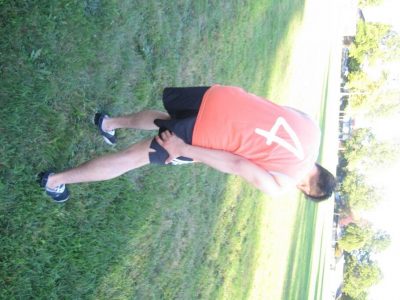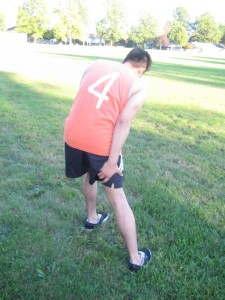If there is abrupt pain in the calf muscle during physical activity, it is probably a pulled or ripped calf muscle which is called as a calf strain or pull. The injury occurs once part of the muscles of the inferior part of the leg are overly stretched beyond their capability to endure the tension. The stretching can result to small micro tears to the muscle fibers or in severe injuries, a full rupture of the muscle fibers. The other possible reasons why the calf muscle becomes sore include the following:
- Calf muscle cramp involves involuntary contraction of a muscle which is momentary but can be intense that can lead to a bruise
- Achilles tendon tear can cause abrupt, piercing pain in the rear part of the inferior part of the leg or swelling, pain and bruises over the calf muscle
What are the causes?
A calf sprain or strain usually occurs during speeding up or a sudden alteration in the course when running. A ripped calf muscle might spasm and forcefully contract so that the toes automatically point downwards. The bruises occur over the damaged area as well as in the foot and ankle due to the accumulation of blood from internal bleeding. The strains can be minor or severe and usually graded as follows:
- Grade I – muscle is stretched which results to small micro tears in the muscle fibers and recovery takes up to 2 weeks.
- Grade II – there is partial tearing of the muscle fibers and recovery takes up to 5-8 weeks
- Grade III – this is a severe injury with full tearing or rupture of the muscle fibers in the lower leg. Full recover can take up to 3-4 months and surgery might be needed
Rest the calf muscle and avoid impact activities or excessive stretching. It is not advisable to resume sports until free from pain.
Treatment
The initial treatment is the RICE method. Simply cover the calf muscle to prevent the blood from pooling in the foot and keep it in a raised position for the initial 24 hours to minimize the swelling.
Anti-inflammatory medications can minimize the pain. Over time, the muscle reconnects to the tendon, however the calf is often shorter before the injury and susceptible to repeat injury. Consulting a doctor is required to ensure rapid rehabilitation. The rehabilitation for a calf strain is based on the severity of the injury and includes the following:
- Rest the calf muscle and avoid impact activities or excessive stretching. It is not advisable to resume sports until free from pain.
- Taping of the calf muscle can minimize the pain and protect against further injury.
- Range of motion stretching exercises must be started after the acute pain is gone.
- A foam roller can be used to perform gentle self-massage as the calf injury heals to reduce scar tissue formation as well as improve the flow of blood to the area.
- Progressive calf stretching exercises can be started as the individual heals.
- Stretching of the Achilles tendon can be done once the individual has healed and no longer experiences pain.


